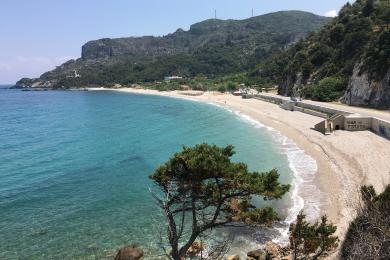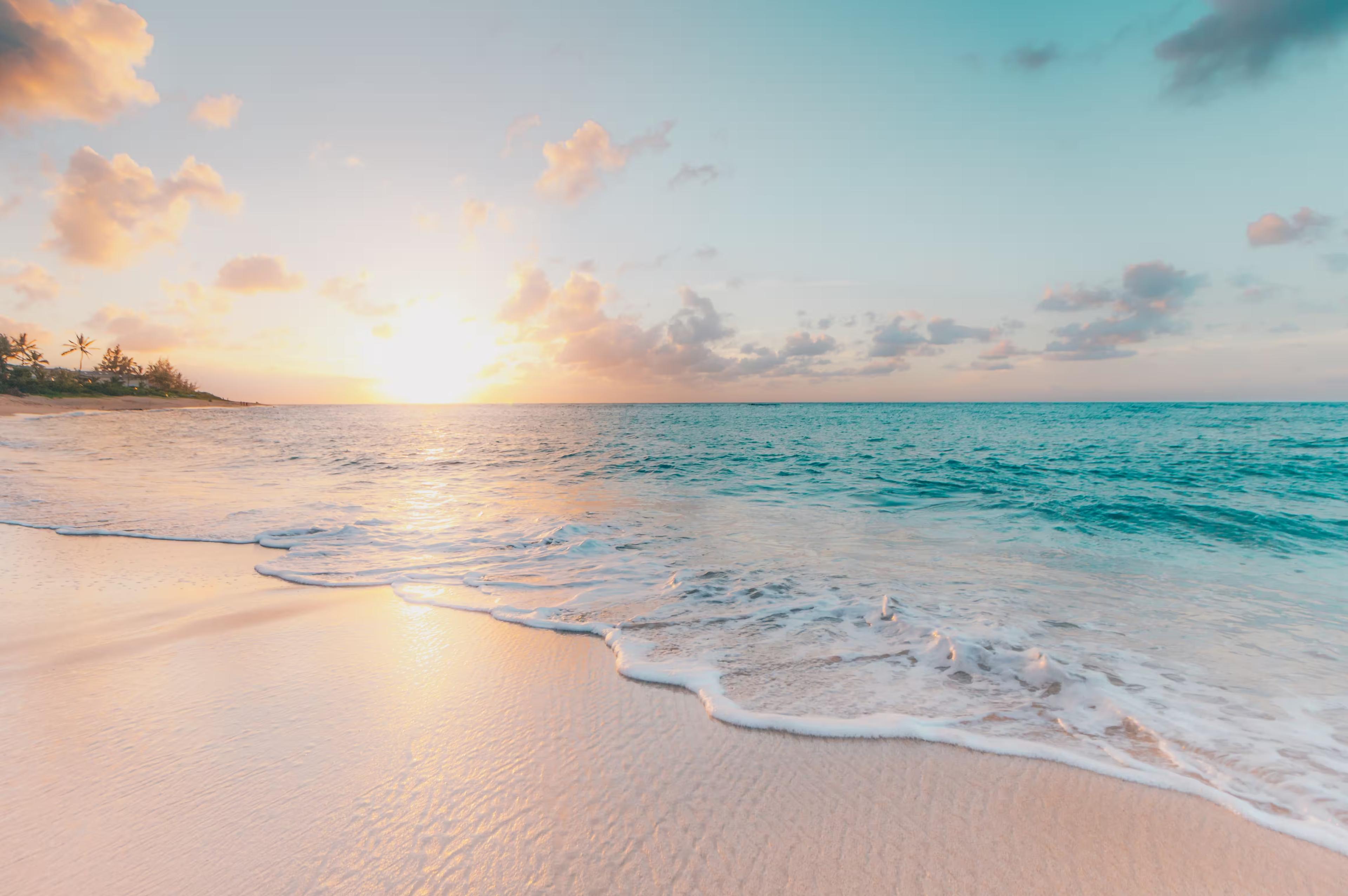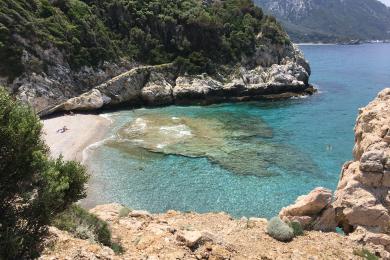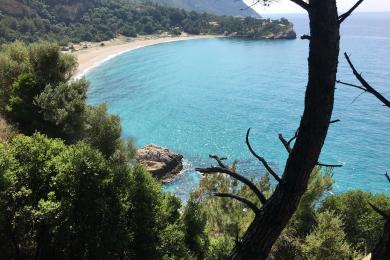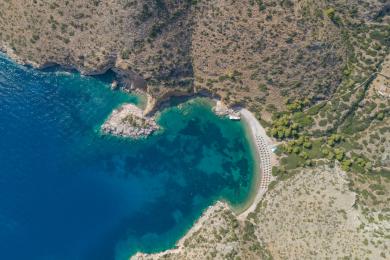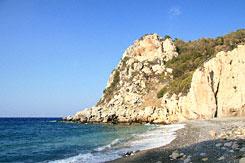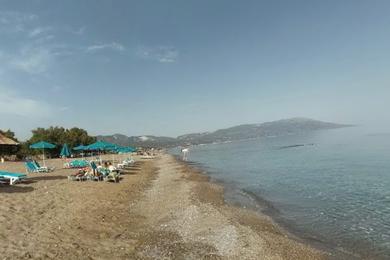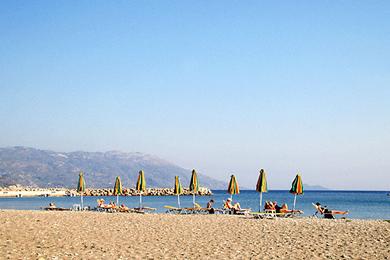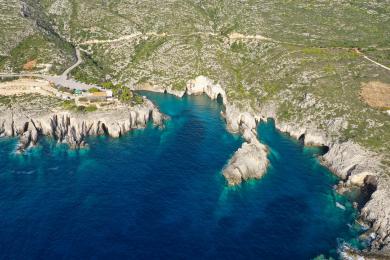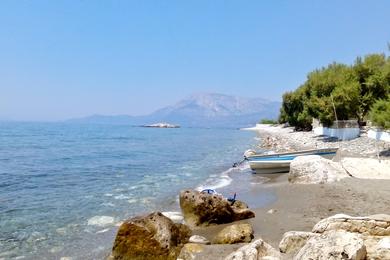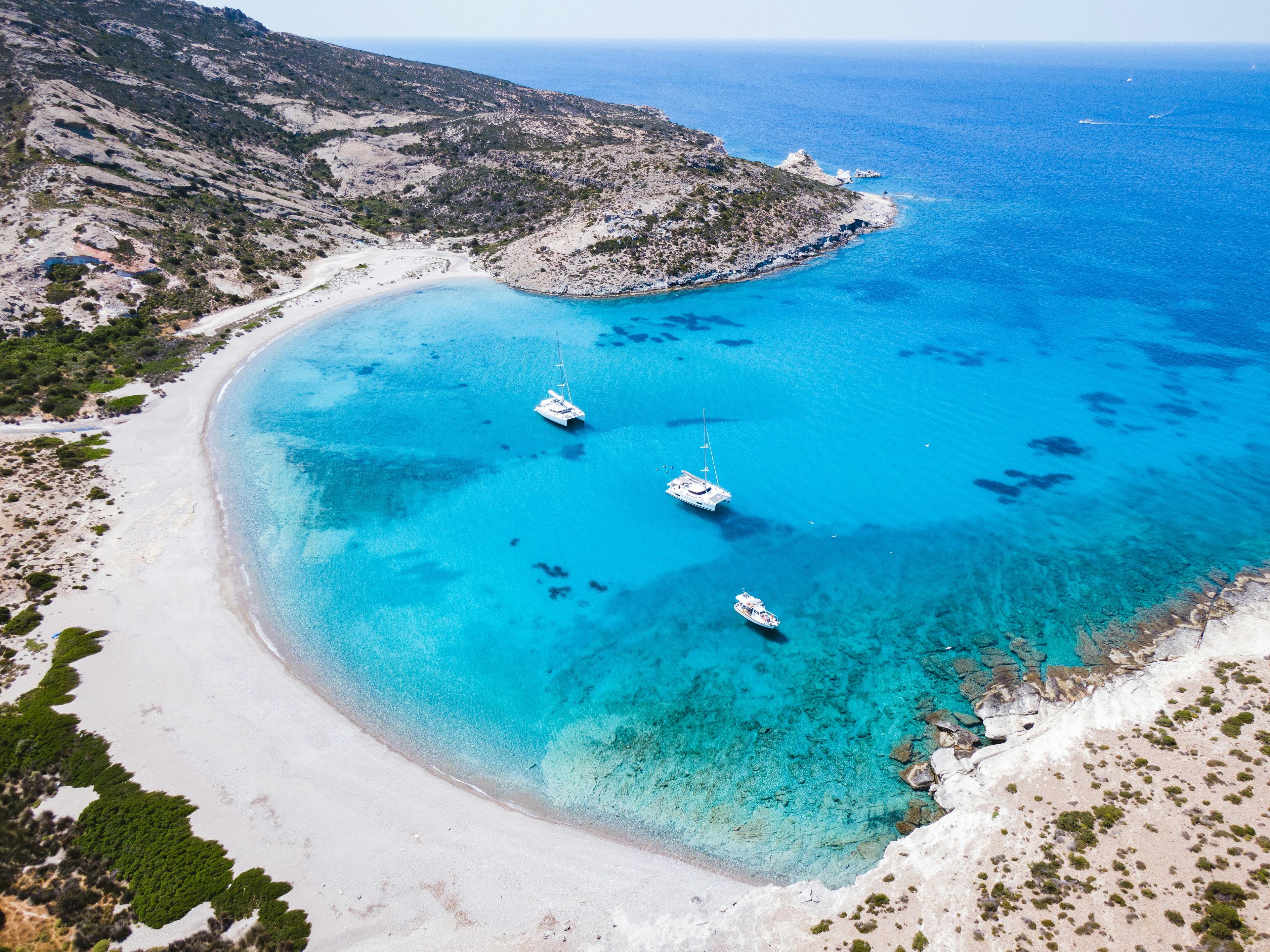There are many attractions near Potami Beach. The Potami Waterfalls are a series of small cascading falls, with the largest waterfall pouring into a crystal-clear pool where visitors can take a refreshing dip. This waterfall can easily be accessed via a short walk through a dense forest, meandering through wooden bridges and streams leading to a small tavern near the falls, making it ideal for hiking, swimming, and photography, offering a refreshing escape in nature. The Agios Nikolaos Church is a prominent and historically significant Greek Orthodox church dedicated to Saint Nicholas, the patron saint of sailors and fishermen. The church was built in a neoclassical style with a beautiful blue dome and intricately decorated interiors, which provide visitors with stunning views of the sea and the town of Karlovasi. The Samos Wine Museum showcases the history of winemaking on Samos Island, from ancient times to the present. It features old winemaking tools, presses, and vats, along with traditional wine barrels used in the production of wine. Visitors can enjoy a wine tasting experience, sampling some of the famous Samos wines, particularly the sweet Muscat wine varieties, which have been celebrated both locally and internationally for centuries.
The Cave of Pythagoras, located on Mount Kerkis on the island of Samos, is believed to have been a refuge for the ancient mathematician Pythagoras when the tyrant of Samos, Polycrates, was chasing after him. This historical site, associated with his teachings and life, consists of two caves and offers stunning panoramic views of the Aegean Sea. A challenging hike leads to the cave, where visitors can also find two small chapels nearby. If you are looking for another nearby attraction, the Karlovasi Tannery Museum has a small gallery that features tools, machines, and equipment used in the tanning process, as well as leather goods produced in the region. Karlovasi was an important center for leather production during the 19th and early 20th centuries, and the museum preserves the photographs, documents, and historical artifacts, which educate visitors on the evolution of tanning techniques and the eventual decline of the industry as modern materials and processes replaced traditional methods.



